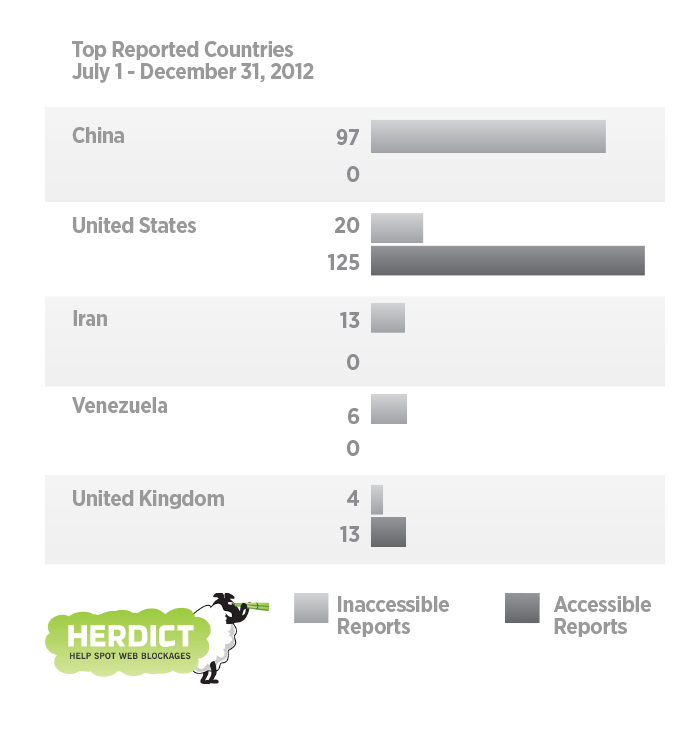Building a More Transparent Web: Twitter and Herdict
On Monday Twitter released their latest transparency report covering the period from July 1, 2012 to December 31, 2012. Their report shows a slight increase in user information requests, a larger increase in content removal requests, and a slight decrease in copyright notices.
One thing we are proud of at Herdict is that Twitter’s transparency report also includes data from Herdict. The data we contributed is our crowdsourced accessibility data for the sites in Twitter’s queue on Herdict. The data for the five countries with the most inaccessible reports for these sites is below:
We are thrilled to be able to support Twitter’s transparency efforts. As Twitter has become a more central element of how we use the Internet (from following celebrities to organizing anti-government protests), it has also become a more frequent target of censorship, filtering, and other actions designed to make it harder to access. (Of course, sometimes it goes down for innocuous reasons, too.) It can be hard for a company like Twitter to know if an ISP in any given country is blocking their service. By using Herdict’s crowdsourced platform to collect data about Twitter’s accessibility, Twitter can better understand where they are being blocked in real time. And because Herdict data is public, searchable, and sortable, we all benefit from greater information about the extent and nature of various web blockages — for Twitter and the other 26,000+ domains in our database.
With so many online services becoming critical to our day-to-day lives, transparency about those services is also becoming critical. For example, users of Skype are rightly demanding information about the confidentiality of conversations conducted over over Skype. Real-time information about where and when a site or service may be inaccessible is just one piece of the bigger transparency picture, but it is an important piece.
We hope others will find ways to use Herdict data, either for improving transparency or for research. We have built a variety of tools to make it easier to use Herdict data or to contribute to it. Organizations can create queues of important sites, and we’ve built (and are continuing to improve) APIs for both filing reports and accessing our real-time data. And we are always happy to work with others on new ways to use Herdict data or to make it better.
